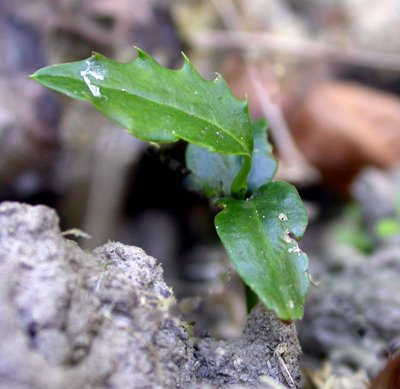

In cutting back some of the longer vegetation I have discovered two plants in The Waste that I have not previously recorded in this project. One is a holly, Ilex aquifolium, and the other (I think) bell heather, Erica cinerea.
The first of these is growing close to the southern edge of M3 while the other is in the bare soil of Great Plantain Desert. Both were discovered using close focus binoculars and the heather in particular is very tiny and inconspicuous.
Holly seeds have a long and complicated germination pattern. The seed may travel through the gut of a bird in winter and the embryo starts to develop during the following warmer months. It then needs a period of cold stratification before germinating in its second spring. So, at a minimum, the seed of my holly settled into its position in winter 2004/5.
The bell heather is, I think, unlikely to be a natural arrival as our nearest wild heather patches are some way away. We do grow a few plants in the garden, or it may have come in as seed on my boots - who knows. Given the right conditions I think this and ling, Calluna vulgaris, are quite good at spreading themselves provided they can find open,non-calcareous soil.
No comments:
Post a Comment